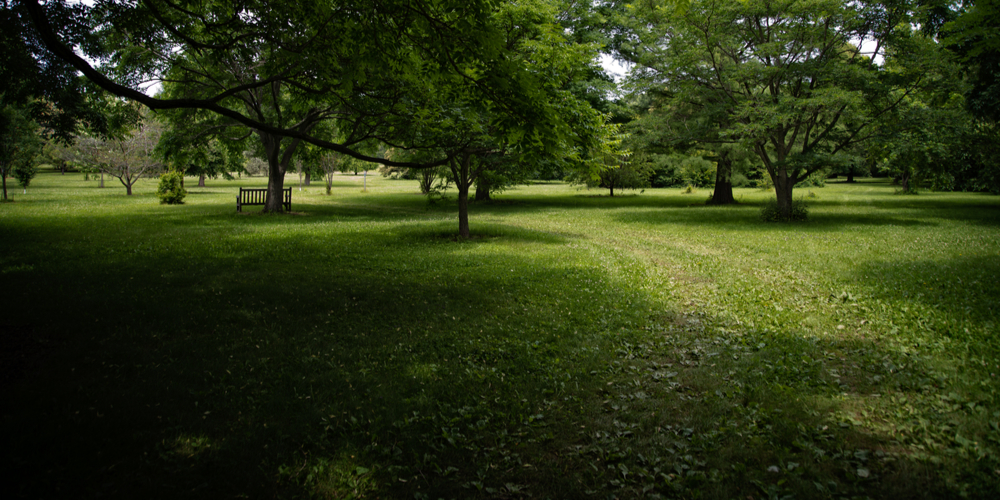You may not have the ideal conditions needed for your favorite grass. Your lawn or yard could have tall trees, and the ground might be mostly made of sandy soil.
However, there’s still a way to create a green turf no matter the environment or landscape. Ideally, here are the things you should do when you want to know how to grow grass in sandy soil and shade.
How to Grow Grass in Sand?

Not a lot of grasses do well with pure sand as its soil. However, there’s still a way to make grass grow in sandy soil- just add some organic amendment and topsoil, and it will be sure to thrive.
In itself, sand might be a good first consideration for grass. It drains well and has space in-between to allow grass roots to grow unimpeded. However, most gardeners will quickly discover that the seeds dry out too soon (and die), or that the seedlings grow but then they wither away because of lack of moisture and nutrients).
Sand mixed with organic matter and topsoil is the ideal environment for all grass species. It’s recommended that you mix sand with topsoil about 4 to 6 inches tall for the best chance of success. This way, the seeds will have the consistent moisture they need to germinate, and they’ll have access to nutrients to continue to maturity.
Compost or fertilizer will provide the nutrients so your grass can grow lush and vigorous, and regular watering should take care of the rest.
The good news is that sand can be easily amended with other soil mixes and types, including compost, topsoil and garden soil if you’re trying for a green lawn. Depending on the grass type you’ll want a balanced mix so the soil won’t be waterlogged or hold too much moisture.
How to Grow Grass in Shade
Growing grass in shade is much more difficult, as both cool season and warm season grass both like full sun.
Short of clearing your yard of trees and tall bushes, sun-loving grass will not prosper when they’re under the shade. The good news is that there are certain species of grass that are shade-tolerant and can grow lush even in bright, indirect light.
You can choose among several varieties, including tall species such as Fescues, Zoysia and St. Augustine. They can survive in locations that get part sun and shade throughout the day and will look green and healthy with the right care. Also, don’t forget that shade-grown grass will still need to be watered and fertilized, and mowed regularly to grow well.
Adjust Watering and Fertilization. Grass in shady areas typically requires less water and fertilizer. You might need to compensate if there are shrubs and trees nearby, but it shouldn’t be more than the grass you have that’s exposed to full sunlight. Young grasses still need more water as they become established, but after that you can cut back to every three to five days during the growing season.
Mow Higher. Adjusting the mowing blade to a higher height allows for certain benefits. You give the grass a greater blade surface so it can catch more light, and the plant will dig in deeper roots for better health and resiliency. It’s recommended that you not cut more than a third in a mowing session or your lawn will become stressed.
Adjust the Soil pH. Soil balance can get out of whack quickly in shaded conditions. When there’s low pH, weeds tend to grow quickly and overtake the rest of the flora. Poor drainage can invite moss and other undesirables into the picture. What you’ll need is a pH balancing solution so your shaded grass can absorb more nutrients. Also, aside from putting in well-draining soil you can dethatch and aerate the soil for better air and water circulation.
How To Grow Grass In Sandy Soil And Shade: Final thoughts
Grass tends to do better where there’s more light, and there’s always something you can do to make this happen. Reduce tree and shrub canopies by pruning and trimming- remove dead branches or foliage that may be getting in the way so the sun reaches the ground. If you’re putting in new trees and plants consider varieties that have less dense foliage.
Related Article: Picking the top Grass Seed For Sandy Soil
